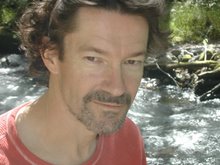You can tell there is something of a lull today as I am offering up a second item in the space of less than two hours. I have been weighed down with a certain guilt that I haven't been entertaining my readers at quite the frequency with which they have become accustomed. I came across a nice little article last week in the Tribune about a "net-zero" house in Chicago. For the uninitiated, a net-zero house is one that in energy does just what it says: consumes no more energy than it produces, and may in favourable circumstances be a net producer. Cool n'est ce pas? Needless to say the house is suitably architecturally stimulating and also quite expensive - about $1.6 MM for a modest (according to the single occupier) 2,675 square feet. Compared to the vulgar monstrosities of excess that Dulcie provides for her well-mortgaged clients it is modest. I have heard couples wailing at the prospect of 5,800 square feet (8 bathrooms if you please) just not being enough these days.
The energy generating sections include solar panels (of course) and geothermal. There are green rooves (roofs in this country; I guess we could have a debate about that, Firefox none too happy with my word selection), things where stuff is growing to provide insulation and do its little bit for global warming. Inside there is energy-efficient lighting (of course), no plasma TVs, radiant flooring and air recirculation. Just for grins there is also a "gray water" system that diverts the washing machine water into the lavs.
It's all very lovely and would that I were a 44 year-old pharmacist (is that why so many students want to get into pharmacy?) able to afford its spendours. Would that we all could. The question is, is this a realistic vision for the future of housing? We are still waiting for the cost of solar to decrease relative to other energy sources. Will it ever? Would photovoltaics ever be workable in an apartment building where the surface area to volume ratio is a lot smaller? Meanwhile let our architects indulge our energy-conscious, well-heeled brethren. Far better that than the odious piles now losing their value by the million.
Scienceblogs is shutting down
7 years ago




